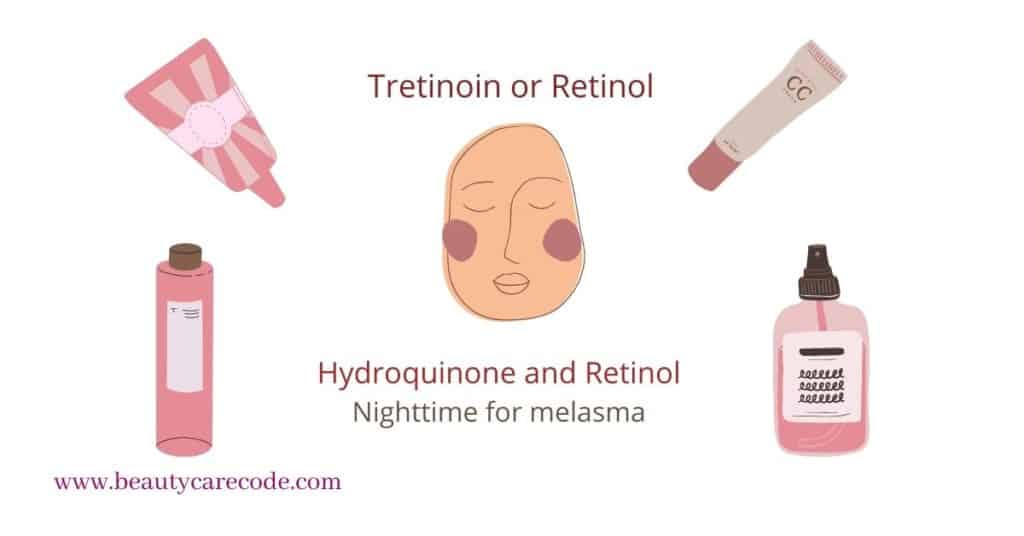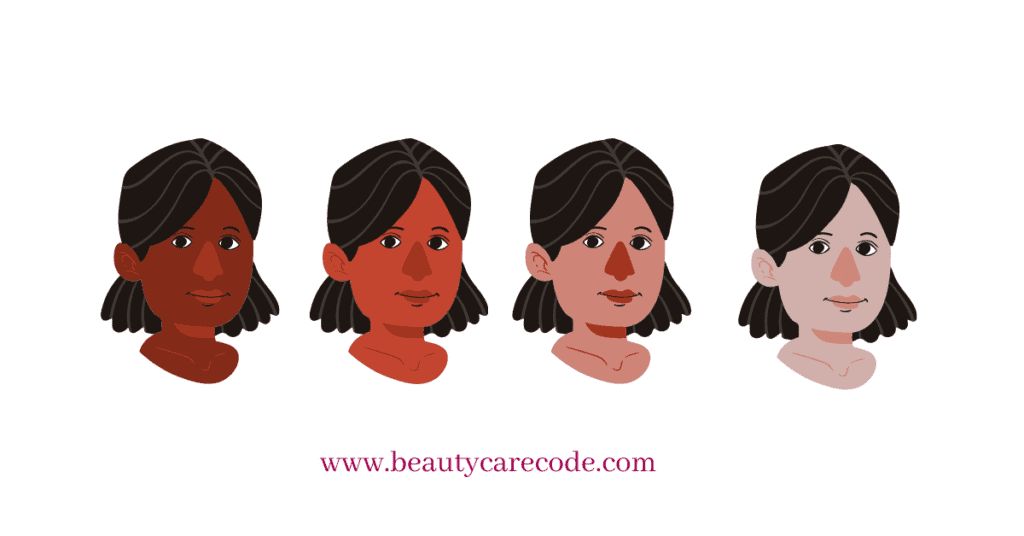A few days ago one of my nieces asked me how she could get rid of dark spots on her face. That’s how I figured out what to write for my next blog post. I am not a dermatologist but I know about the effects of medications as a pharmacist. When something requires diagnosis I never interfere with the job of physicians. But dark spots are very common and normally are the result of not properly using your sunscreen on those sunny days in summer. My recommendation was not expensive and actually very easy: a combination of hydroquinone and retinol or tretinoin for dark spots or hyperpigmentation.
Tretinoin and hydroquinone for dark spots or Hyperpigmentation
Hyperpigmentation or melasma, why it happens?
Melasma is the name of those grayish-brown spots on the face, usually on the forehead, nose, upper lip, chin and cheeks. It is very common during pregnancy and normally between women more than men. However, it is not limited to these groups and anyone may have it.
Fluctuation in your hormones can create melasma in your face. For example, when you start or stop taking an oral contraceptive (birth control pill) you may notice the dark spots appearing in your face.
Melasma can be due to exposure to sunlight. Sun is a major factor in creating or worsening melasma. Sometimes sunscreen can not prevent it. It is really a challenge how to control it on sunny summer days.
Melasma is not dangerous but it is a beauty concern and it may cause emotional distress. Sometimes women get desperate to improve their look and appearance of melasma so they are willing to spend lots of money. That’s the reason the market gets very hot. The products in the market may not be always useful or maybe even dangerous.
Tretinoin and hydroquinone for hyperpigmentation have proven efficacy and if you use them properly are not dangerous. I explain each of them so you have a better understanding of how they work and how they can be useful for you.
Tretinoin and hydroquinone for dark spots or hyperpigmentation
Tretinoin for hyperpigmentation
Topical tretinoin is used to treat hyperpigmentation or melasma, acne and photoaging. It is available as a gel, cream and ointment. In Canada, you can only get it with a prescription.
Back home in Iran, we could get it over the counter such as tretinoin in 0.025% gel or 0.1% cream.
Despite its efficacy in treating many skin conditions, tretinoin causes skin irritation, redness, peeling and photosensitivity. It is very harsh on sensitive skin. Moreover, as I mentioned earlier it is not available over the counter in Canada or even in the US. So what you can do to get the benefits: either get a prescription from a dermatologist or use retinol instead of tretinoin.
Retinol for hyperpigmentation
Tretinoin and retinol are coming from the same family of retinoic acid. However, retinol is gentler on the skin and more suitable for sensitive skin and you can get it without a prescription. There are many retinol products available on the market which usually contain 1% retinol.
How and how long to use retinol
You can use retinol and hydroquinone together. It takes time to see the effects. You have to continue to use it for at least 12 weeks.
Hydroquinone for hyperpigmentation
Hydroquinone, as a topical application, is a skin lightening or bleaching agent to treat dark spots and melasma. You can get it over the counter at a concentration of 2% or lower.
Can we use hydroquinone and retinol or tretinoin for hyperpigmentation together?
Yes. You can use them together once a day. In fact hydroquinone penetrates better in skin when you apply it with retinol.

Tretinoin and hydroquinone for dark spots
How to treat dark spots using tretinoin and hydroquinone?
First, you need to know the reason you have dark spots or melasma. If you have been under the sun for long hours with no protection or you are a woman in your pregnancy, the reasons may be clear. But if you really don’t know and the spot seems strange to you, you need to confirm it with a dermatologist.
At night
- Clean your face with a gentle cleanser.
- Let it dry for 10 minutes.
- Apply your retinol on your face
- Apply hydroquinone on your dark spots
In the morning
- Appy your hydroquinone
- Apply your moisturizer
- Apply sunscreen everyday when you are under sunlight.
Protect yourself from sun exposure
UV rays emitted from sunlight not only cause photodamage and skin diseases they also cause or exacerbate your dark spots. In addition to UV rays, heat and visible light from sunshine cause melasma or deteriorate the situation.
Why hydroquinone is banned in some countries
Why having lighter skin colour is attached to being more beautiful. I get it that if some dark spots appear on your face you like to improve the situation. But making your skin lighter while the skin has no problem or no melasma, is the wrong beauty standard that is set by media. That put many young people in danger and make the market so hot. I have seen people in the pharmacy ask for skin-lightening products. Obviously, they can not get it in the pharmacy without a prescription. But it is not very hard to get it from beauty supply stores across the country.
Investigation showed some skin-lightening products sold in Canada contain alarming levels of harmful ingredients, including mercury, hydroquinone and steroids.
Testing some products showed:
- Hydroquinone lightens dark spots or uneven skin tone. Health Canada warns concentrations greater than two percent can cause severe skin issues, such as burning and discolouration. It has also been linked to an increased risk of cancer.
- Mercury, sometimes added to stop the production of melanin, or pigment is a heavy metal that can pose serious health risks. In addition to skin rashes and scarring, adverse side effects can include mercury poisoning, muscle atrophy, kidney damage and neuropathy — a disease of the nervous system.
- Topical corticosteroids are highly potent prescription drugs not authorized for sale in Canada without a doctor’s prescription. Side effects include skin irritation and, with prolonged use, skin weakening or deterioration, as well as decreased ability to fight infection, symptoms of adrenal gland suppression, or Cushing syndrome.
Be aware of the potential serious danger if you choose a product only based on the advertising. It may be hard but you have to reorient yourself and your image from what is being advertised by the media and the beauty market. Always remember you are beautiful as you are. You are enough as you are.
So much love!
Fatemeh
